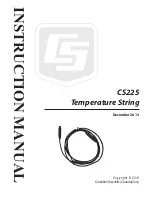
4
can largely decrease the interference spark of the equipment, and greatly improve the stability and
reliability of the system. Since the driver element is TRIAC, it is suitable for controlling 100-240VAC (not
for DC power) with current up to 80A. For the current larger than 80A, an intermediate relay is needed.
Protection elements are series wound to the output terminals, so it can control continuous current up to
0.2A with maximum allowed instantaneous current 2A.
Relay Module:
The relay modules are widely used in industrial control. However, they are the only modules with
life time limit and volume limit and have much electromagnetic interference. There are four types of
relay modules: L1, L2, L3 and L4. For control output, L1 or L4 large capacity module is recommended.
L4 is equipped with high performance relay with small volume and large capacity but it costs higher. L2
module is small in size. Both of its normal open and normal close terminals have varistor spark absorption
but the capacity is small. It is suitable for alarm output. L1 and L are large in size and large capacity.
For those panel size with 48mm width (including D6, E, F and etc). large size modules cannot be installed
in both PCB board. L3 provides dual output to support two loops of alarm, for example, AL1+AL2. If
mechanical switch is not preferred or L3 is not allowed due to size limitation mentioned above , G5 (dual
SSR DC voltage output) with external SSR can be chosen.
Calibration:
The instrument applies the technology of automatic zero and digital calibration, and is free of
maintenance. If the error exceeds certain range, generally, cleaning and drying the inside of the
instrument can fix it. If not, send the instrument back to the factory to examine and repair.
Warranty and maintenance:
Free repair and maintenance will be given in specified period of time since the
delivery. In order to get full and correct repair, please state clear the phenomena and causes of the
malfunction of the instrument.
1.3 Technical Specification
Input type: (universal input)
Thermocouple:
K, S, R, E, J, T, B, N, WRe3-WRe25, WRe5-WRe26 etc
Resistance temperature detector: Cu50, Pt100
Linear voltage: 0
~
5V, 1
~
5V, 0
~
1V, 0
~
100mV, 0
~
20mV, 0~500mV etc
Linear current (I4 module in MIO): 0
~
20mA, 4
~
20mA, two-wire transmitter etc.
Extended input: By keeping all native input specification, another extra specification can be ordered (gradient table
may be required).
Measurement range
K(-50
~
+1300
℃
), S(-50
~
+1700
℃
), R(-50
~
+1700
℃
), T(-200
~
+350
℃
), E(0
~
800
℃
), J(0
~
1000
℃
),B(200
~
1800
℃
), N(0
~
1300
℃
)
Cu50(-50
~
+150
℃
), Pt100(-200
~
+800
℃
)
Linear Input: -9990
~
+32000 units defined by user.
Measurement accuracy :
0.3 (0.3%FS ± 0.1
℃
)
Resolution :
0.1
℃
for K, E, J, N, Cu50, Pt100; 1
℃
for S, R
Temperature shift :
≤
0.015%FS /
℃
(typical value is 70ppm/
℃
)
Sampling cycle :
A/D converter sampling 8 times per second
Response time :
≤
1s ( when digital filter parameter FILt=1)
Alarm function:
Four different alarm type, high limit, low limit, deviation high limit and deviation low limit, optional
with alarm blocking at the beginning of power on.
Control mode:
On-off control mode (Hysteresis adjustable)
Standard PID with auto tuning



































